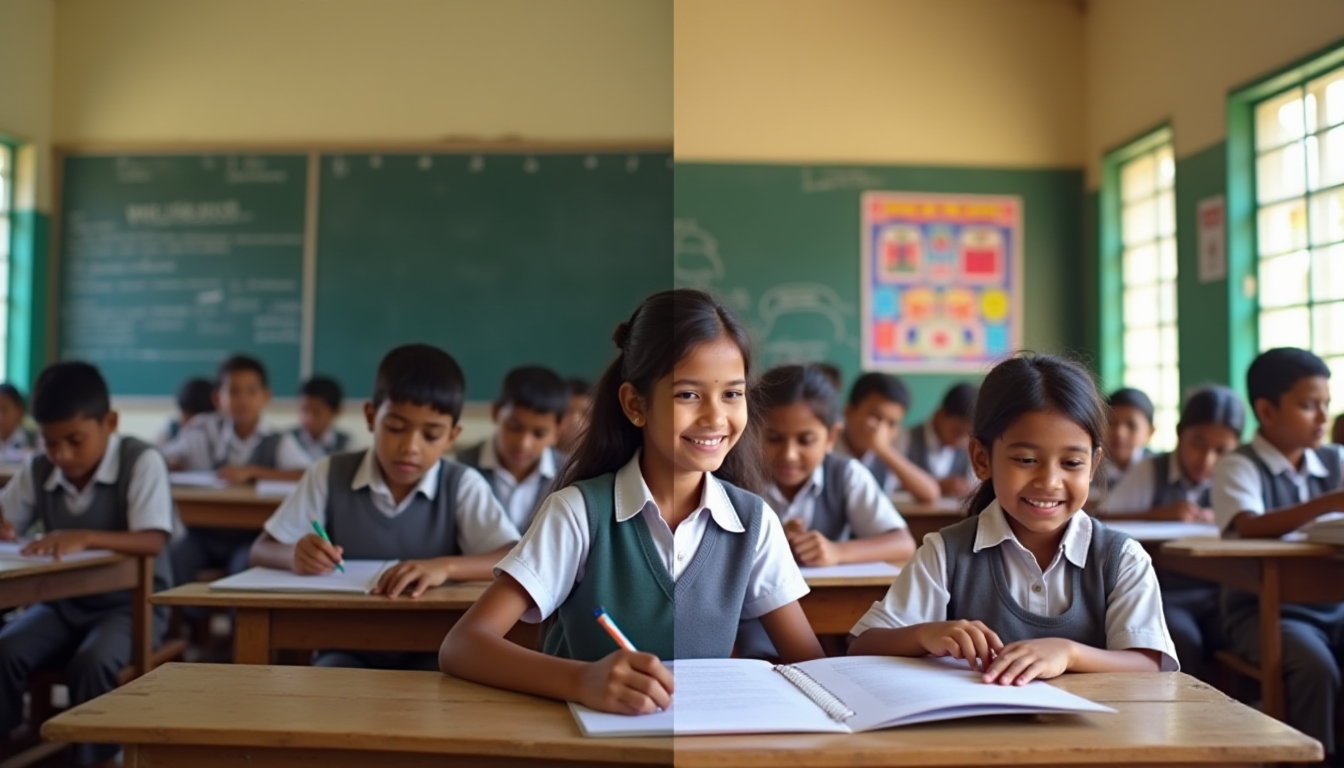Reimagining Teacher Training: How Practice-Based Learning Transforms Classroom Readiness

Introduction
Stepping into a classroom for the first time as a teacher can feel like being thrown into the deep end. You're expected to inspire curiosity, manage diverse student needs, and respond to unexpected questions—all at once. This challenge is especially pronounced in India, where teachers often work with large class sizes and minimal support. Traditional training methods haven’t always kept up with these demands. But recent research from Harvard University offers a promising solution: practice-based teacher education (PBTE). At Tailwnd, we believe this could redefine how Indian educators are prepared for the classroom.
The Realities of Teacher Preparation in India
Indian educators juggle more than just instruction—they plan lessons, manage students, tackle administrative work, and often do so without updated materials or sufficient tech infrastructure. A 2024 NCERT report highlights these challenges, especially for pre-service teachers (PSTs) who must develop key teaching skills in limited time. Among the most critical of these is the ability to understand and respond to student thinking—an essential skill, particularly in subjects like mathematics (as emphasised by the National Council of Teachers of Mathematics, 2014).
Most teacher training still relies heavily on theory—reading, reflecting, and occasionally observing. This often results in teachers who understand the ‘why’ of education but struggle with the ‘how’. PBTE changes this by bringing real teaching practice into the training process.
What the Harvard Study Found
A study led by Zid Mancenido and colleagues at Harvard University (published February 2025 in the Annenberg Institute's EdWorkingPaper No. 23-873) tested the impact of different training approaches on teacher readiness. In the study, 185 college students preparing to teach were divided into three groups, each receiving a different type of one-hour training session:
- Traditional Group: Focused on reading teaching research and discussing personal insights.
- Practice-Based Group: Watched expert teaching videos and practiced teaching with peers and a facilitator.
- Mixed Group: Combined reading with video analysis.
Participants were then assessed on how well they could elicit and respond to student thinking, both through written scenarios and live teaching with trained actors.
Key Outcomes:
- Written Scenarios (Vignettes): The mixed and practice-based groups performed significantly better than the traditional group (effect sizes: 0.72 and 0.67 SD).
- Live Teaching - Correct Responses: The practice-based group outperformed all others, with an effect size of 1.54 SD.
- Live Teaching - Incorrect Responses: Only the practice-based group showed measurable improvement (effect size: 0.43 SD).
These results clearly indicate that PBTE builds stronger teaching instincts—especially when applied in real or simulated classroom situations.
Why Practice-Based Learning Works
Practice-based training isn’t just about watching or listening—it’s about doing. Here’s why it’s so effective:
- Breaking Down Expert Teaching
Trainees analyze real classroom videos to understand how expert teachers ask probing questions or clarify student misconceptions. This helps PSTs focus on concrete techniques rather than abstract theory. - Low-Stakes Rehearsal
By practicing lessons with peers and getting real-time feedback from facilitators, PSTs build confidence and reduce anxiety—key to developing effective teaching habits. Grossman et al. (2009) emphasize this rehearsal approach as a critical step in skill-building. - Building Automaticity
Repeated practice fosters the ability to respond to student thinking quickly and effectively. Deborah Ball and Magdalene Lampert (2010) argue that this kind of training develops "adaptive expertise" essential for real-time classroom dynamics.
The PBTE approach closely aligns with India’s National Education Policy (NEP) 2020, which stresses active learning, critical thinking, and reducing rote memorization.
Why This Matters for Indian Classrooms
The benefits of PBTE are especially relevant in the Indian context:
- Low-Tech Friendly
Training videos and simulated activities can be delivered on low-cost devices, making PBTE viable for rural and resource-constrained schools. - Prepared for Diversity
Practicing how to handle different student responses prepares teachers for the variety of learning styles and behavioral patterns in Indian classrooms. A 2020 Child Development study also linked this preparation to reduced teacher burnout. - Time Efficient
Even short practice-based sessions (as little as one hour) can have a powerful impact—making it ideal for India's time-strapped teacher training programs. The Journal Press India (2025) underscores the need for compact, high-impact interventions in teacher education.
Tailwnd’s Approach to Practice-Based Training
Tailwnd incorporates PBTE principles to support teacher growth in a flexible, scalable way:
- Interactive Flashcards
Teachers can practice presenting concepts like fractions or algebra through simulated classroom prompts. - Expert Video Library
Access real classroom footage with guided reflections, helping teachers analyze techniques and strategies in context. - Collaborative Simulation
Teachers can role-play classroom situations in online forums, receiving peer and mentor feedback—mirroring the rehearsal component of the Harvard study. - Bite-Sized Modules
Our short, 15-20 minute training sessions focus on actionable skills like questioning techniques or feedback delivery—ideal for busy teachers.
With Tailwnd, teachers aren’t just learning about teaching—they’re learning through teaching.
Conclusion: A Call to Rethink Teacher Training
The Harvard study underscores what many educators have long felt: theory alone isn’t enough. We need training that prepares teachers for the complexity and immediacy of real classrooms. Practice-based methods offer a powerful, research-backed solution—and Tailwnd is committed to bringing them into every Indian school.
Start Your Journey
Want to explore how practice-based learning can elevate your teaching? Head to Tailwnd.com to try our interactive tools and video resources. And if you’re curious to learn more, you can access the full study via the Annenberg Institute’s EdWorkingPaper Series here.
Let’s reimagine teacher training—together.





